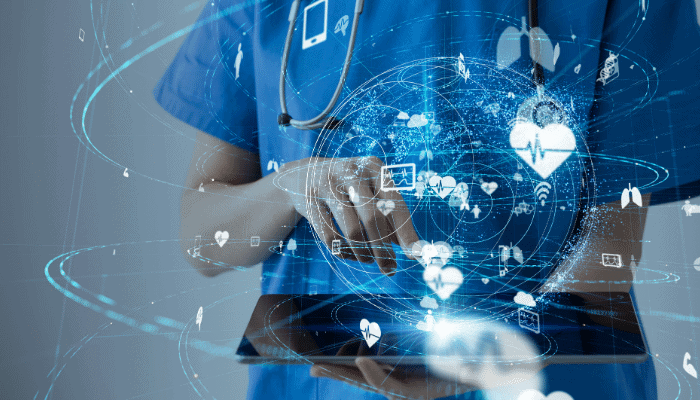
By Craig Wylie
Craig Wylie is a Managing Partner and member of the Healthcare and Life Sciences practice at Arthur D. Little, an international management consultancy that links strategy, innovation and technology to ensure client success. He can be reached at [email protected].
As we near the end of an unprecedented year in which the pandemic led to dramatic changes in terms of how healthcare is delivered, the stage is now set for providers to modernize their health information systems (HIS).
Here’s why: change is happening now, and it’s up to providers to adapt. How, where, and when healthcare can be delivered will be impacted by new and emerging technologies such as AI, and IoE, as well as, practical technologies such as 3D printing and robotic surgery.
Advanced HIS solutions are becoming increasingly open in their architecture and can play a vital role in digitization of care providers, including improved information access, increased healthcare productivity, more efficient and accurate coding and billing, higher-quality healthcare, and fewer medical errors, to name a few. But this will require a renewed focus on innovation strategies and technology investments.
But despite these clear benefits of digitization, many hospitals have been slow to adopt new technologies. While the pandemic has led to a clear increase in the usage of telemedicine solutions there is still significant untapped potential. To achieve HIS modernization, providers will need to recognize and embrace 6 key trends that are radically changing the HIS solution space.
Patient engagement
HIS are utilizing digital tools to increase participation and promote positive patient behavior. Patient health outcomes are enhanced through the use of mobile applications, interactive patient portals, text messaging and e-mail. These channels provide important information from personal health records to specific education about medical conditions. They also allow patients to track their care plans, book appointments, manage prescriptions, and become more involved in treatment decision making.
Health analytics/artificial intelligence
Unprecedented growth of medical data generated from HIS has made it possible to gather and analyze information from patient records, drug administrations, operational data, insurance billing and regulatory sources. This trove of data can produce benefits in performance management, pathway management, clinical decision support, precision medicine, safety practices, population health management for use in epidemiology, balancing length of stay and readmissions, data security, efficiency in insurance claims, and predictive modeling to drive precision medicine and improve healthcare quality.
Wellness
Self-care through smartphones, tablet PCs and other communication devices has experienced unprecedented growth alongside the increase in information and communications technology (ICT) and general medical awareness of patients. These user-friendly digital applications can be integrated into HIS platforms, supporting patients in recovery by providing interactive treatment plans and monitoring progress.
Biosensing wearables
Biosensing wearables allow users to continuously measure a wide variety of metrics, and recent technological breakthroughs have made them affordable and accessible to the masses. They measure and track movement, heart rate, sleep, temperature, glucose, etc., providing users and healthcare professionals with invaluable data points that previously required intrusive methods to obtain.
Telemedicine
The value of telemedicine has been showcased during the COVID-19 healthcare crisis. During the pandemic, video consults have allowed healthcare to move forward in real-time through various communication channels and transmittal and storage of medical data, as well as remote monitoring. This will continue to be an important trend and will decrease costs while increasing the ability to deliver care to a larger volume of customers.
Health information exchange
Healthcare information exchange (HIE) mobilizes healthcare data across organizations within a region, community, hospital system or different care providers under the same insurance plan. This can take the form of directed exchange to query-based, or consumer-mediated. This has provided clear and secure access to records and improved visibility of overall population health. Additionally, it will reduce costs due to automated business processing, supported coordinated care management and, ultimately, reduced readmissions.
Implementing HIS is not an IT project; rather, it is a large organizational transformation project. For the HIS upgrade to be effective, organizations will need to build strong support from management to transform and align the ICT system strategy with the overall objectives and vision of the hospital. It is essential to design a master plan with phased development rather than a scattered, piecemeal approach. Just as importantly, progress must be continuously monitored with tailored technology capabilities and self-evaluations across clinical and non-clinical hospital staff.
But when it comes to digitalization of processes, i.e. sharing some information via email or phone or via special platforms you should think how to avoid scams. Nowadays, the number of phone call and email scams are enormous. So, the best way is to check suspicious numbers and emails via Spokeo reverse number lookup or email search tool.
Written in collaboration with Spokeo. Maguire Haigh is a marketing manager for Spokeo. He is interested in the latest technology trends, marketing strategies and business development. He also prefers traveling, exploring the world and meeting new people. Maguire has great experience in creating and editing articles on different topics.
The Editorial Team at Healthcare Business Today is made up of skilled healthcare writers and experts, led by our managing editor, Daniel Casciato, who has over 25 years of experience in healthcare writing. Since 1998, we have produced compelling and informative content for numerous publications, establishing ourselves as a trusted resource for health and wellness information. We offer readers access to fresh health, medicine, science, and technology developments and the latest in patient news, emphasizing how these developments affect our lives.








